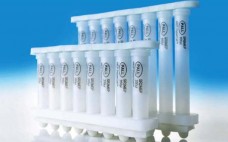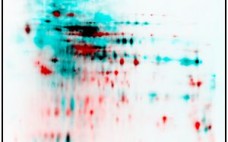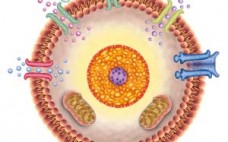With many pharmaceutical processes requiring large volumes of water, it is critical that any pharmaceutical-grade water used is protected from particulate or microorganism contamination, in order to ensure that process operations do not become inadvertently contaminated. Several approaches can be used to ensure that water remains free from contamination, including the storage of purified water or WFI (Water For Injection) at a minimum temperature of 80°C to discourage microbial growth in the storage system. Another approach is to add ozone,…
Sponsored Content
Three Steps to Start You on the Path to Obtaining the Best Recombinant CHO Cell Line
When developing efficient, high quality biomanufacturing processes, it is imperative that the expression system (‘host cell line’ and ‘vector’) and the process to isolate and identify the best clonal cell line (‘clonal cell line development process’) are of the highest quality. At FUJIFILM Diosynth Biotechnologies a team of scientists has invested more than 20 FTE years undertaking innovation work which has culminated in the development of a new host cell line and vector, along with an optimised clonal cell line…
Ask the Expert – 2D DIGE Western Blots for HCP Detection and Coverage Determination: Advantages of Fluorescence over Colorimetric Detection
with Jamina Fiedler, BioGenes GmbH Biopharmaceutical products must be free of by-products (such as host-cell proteins, HCPs) for approval by authorities such as the US FDA. For that, a clear proof is required of sufficient HCP detection by the HCP assay used. The two-dimensional (2D) DIGE Western blot method is the standard technique for detection of HCP coverage. Colorimetric detection has several limitations that can be overcome by the use of fluorescent detection. Jamina’s Presentation Practical differences between 2D DIGE…
Computer-Aided Assay Development for Charge Heterogeneity Analysis by iCE
Unlike chemically synthesized drugs, protein therapeutics are a dynamic heterogeneous mix of active compounds. Due to their complexity, analytical techniques like isoelectric focusing have become indispensable tools in evaluating biologic preparations. The resulting surge in charge isoform analysis has led to major advances in instrumentation, such as Imaged Capillary Electrophoresis (iCEâ„¢)2 . However, to obtain the full benefit from improved instrumentation requires the coinciding development of robust assays. The goal of this note is to promote the successful application of…
Use of ScreenExpert RoboColumns for High Throughput Study of Loading Conditions on HyperCelâ„¢ STAR AX and MEP HyperCel Sorbents for MAb Purification in Flow-Through Mode
The use of HyperCel STAR AX and MEP HyperCel sorbents for MAb polishing provides efficient contaminant removal. A study to screen loading conditions for MAb purification in flow-through mode on MEP HyperCel and HyperCel STAR AX sorbents was conducted using 200 μL ScreenExpert RoboColumns. The study demonstrates the suitability of ScreenExpert RoboColumns for scale down evaluation of chromatographic parameters, and the good consistency with data obtained on 1 mL PRC prepacked columns. ScreenExpert RoboColumns allow loading of high sample volume…
Implementation of Mustang® Q Membrane Chromatography as a Polishing Step (Residual DNA Removal) in Monoclonal IgG1 Production from CHO Cell Culture
In collaboration with ProBioGen AG, Berlin, Germany, Mustang Q membrane chromatography was evaluated as a polishing step following protein A affinity and cation exchange chromatography to remove residual host cell DNA during a Monoclonal antibody (MAb) purification process at 250 L cell culture production-scale. Data indicated efficient DNA clearance by the Mustang Q membrane chromatography step during the process (96%). Additionally, contribution of the Mustang Q membrane chromatography polishing step to HCP removal was shown. Based on a virus-spiking scale-down…
2D DIGE Western Blot for HCP Detection and Coverage Determination: Advantages of Fluorescence over Colorimetric Detection
This webcast features: Jamina Fiedler, Head of 2D Analytics at BioGenes GmbH. Biopharmaceutical products need to be free of contaminating host cell proteins (HCPs) prior to approval and regulatory bodies ask for a clear and manifest proof that HCP assays are fit for purpose. The colorimetric 2D Western Blot method, although widely used for HCP detection and coverage determination, has several limitations. Using examples, webinar participants will learn how the use of fluorescent dyes can help overcome these limitations to…
Flow Electroporation Capabilities and Case Studies: Rapid GPCR Screening and Functional Ion Channel Assays
MaxCyte’s proprietary flow electroporation technology has been successfully applied in ex vivo cell therapy (1) and drug discovery pipelines where reproducibility, efficiency and the need for increased cell numbers are critical. This technical paper discusses the merits of transient transfection using flow electroporation versus other recombinant expression approaches and its application in hit identification and lead optimization programs. Data are presented demonstrating the key features of the MaxCyte® STXâ„¢ Scalable Transfection System, including broad applicability, scalability, and the production of…
Delivering Fit-for-Purpose Biomanufacturing CHO Cell Lines
A prerequisite for the successful manufacture of a biopharmaceutical in mammalian cells is a cell line development strategy that selects a cell line with the most desirable properties from a heterogeneous transfectant population. Desirable attributes include the stable, high expression of product with the appropriate critical product quality attributes rapidly, reproducibly and with relative ease. Obtaining a host cell line that inherently exhibits such desirable biomanufacturing attributes can therefore have a significantly positive effect on the identification of recombinant cell…
Assessing Immunogenicity Using Ex Vivo T cell Assays
This article discusses Antitope’s developed highly sensitive ex vivo T cell assay technology that can detect T cell responses against T cell epitopes in therapeutic proteins. These assays can be used to select non-immunogenic lead proteins as well as support the optimisation of leads by engineering out T cell epitopes









